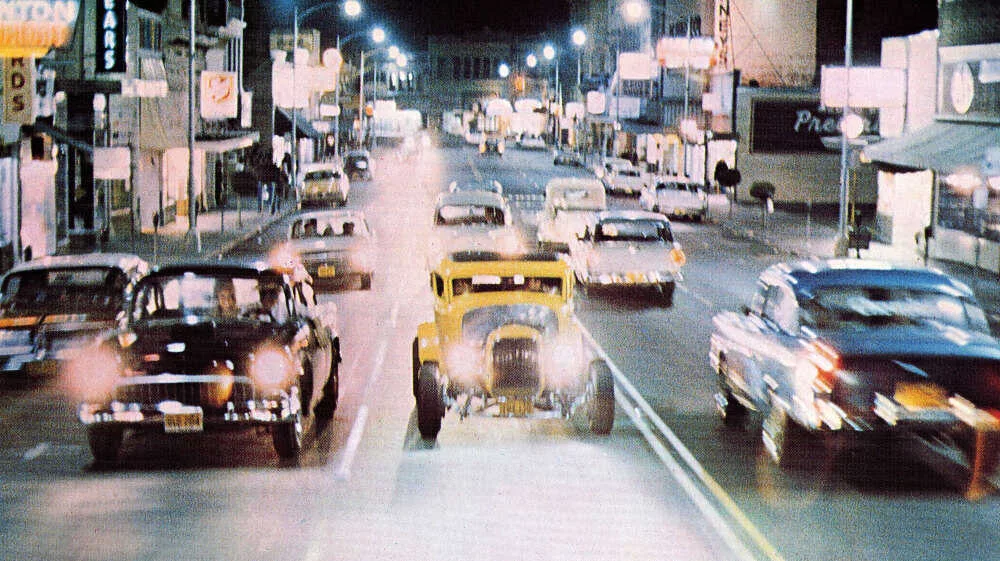
Not long ago I read a post on social media from a guy who pointed out that for most of the mass entertainment age (basically the last 100 years), the nostalgia trigger point has been about 20 years. So, up until around the year 2000, if the entertainment media was fixating on a nostalgic time, it was usually about 20 years in the past.
The main gist of the post, and I’ve written about this a bit, is that up until now, when we looked back 20 years, there was an identifiable difference in dress, music, the way people talked, etc. If you watched a period movie in the early 2000s that was set in the 1980s, or if you watched a 1980s movie, you would know immediately what you were seeing. The 1980s had a very definable look, sound, and style. But today, if you watch episodes of The Office, except for the computers and cell phones, you really wouldn’t know that it is over 20 years old. I recently binge-watched The Sopranos and (again, except for the phones and the computers and a few of the cars) you wouldn’t really be able to say that the series debuted 24 years ago.
I wrote about his phenomenon some time ago on my Facebook page, but my cousin talked about it yesterday, so I thought I’d expand on it a little bit.
The very earliest silent short films and one of the earliest “genres” in films were Westerns. They depicted Annie Oakley, Buffalo Bill, Cowboys and Indians, etc. These very short silent films were very popular in the late 1890s to the early 1920s, and they depicted a period only a few decades earlier. Annie Oakley and Wild Bill joined up in their Wild West show (themselves depicting a period 20 years prior) in 1885, and the films about their show became popular in the late 1890s to early 1900s. Nostalgic films of the 1930s looked back to the first decade of the 20th century, and nostalgic films of the 1940s looked back to the period just after the end of WWI.
The reason this phenomenon is notable is that, up until recently, 20 years was about how long it took for the generation who grew up during that period to start looking back and noting how much the world had changed. The changes had to be remarkable for the whole media industry to start farming that nostalgia to produce material.
In the 1970s and early 80s, we had a retro-50s boom. The movie American Graffiti came out, and although the movie was set in 1962, it was about the optimistic and somewhat naïve 1950s coming to an end. Happy Days was envisioned as a TV version of American Graffiti, including drafting in Ron Howard as the main character. Originally it was going to be somewhat serious but a more upbeat and nostalgic look at the 1950s.
In school we had 50s dances and parties where we all dressed up like greasers or bobbysoxers and the girls wore poodle skirts and we listened to 50s music.
Movies like Grease, Peggy Sue Got Married, and Back to the Future were all notable because the 50s, only 20-30 years earlier, had such a notable style, look and sound. Can you imagine saying that today about 2004?
The Wonder Years debuted in 1988 and it was a coming of age show about a kid growing up in the late 60s and early 70s. Nostalgia for people like me – my age – who were starting to get married and have children.
In the 90’s there was a nostalgic retro 70s movement. That 70s Show came out and it emphasized a very stark cultural difference between 1998 (when the show debuted) and 1976. Grunge music was an obvious throwback to the rock-n-roll of the 1970s.
In the early 2000s, a 1980s retro thing started, and it continues in full force today.
But then it all kind of stopped. Imagination, I mean. With the exception of people today constantly staring at phones, which is the notable cultural identifier of this generation, culturally today is more of just a mash-up of everything that came before. There seems to be no imagination in it. Movies are rebooted and remade endlessly. We’re about to get a reboot of Roadhouse. Almost every song we loved from the 1970s to 2000 blasts from every commercial. The “new” songs are mostly covers or digitally spewed copy-paste songs sampling from something else. The dance steps almost all came from the 80s. In the 80s we thought the swing dancing of the 40s and 50s was jaw-dropping and awesome, but we laughed at the 70s dancing unless it was John Travolta in Saturday Night Fever. At the Super Bowl halftime shows you’ll just see breakdancing or steps that Paula Abdul was doing 30 years ago.
This sounds like an “I’m old, get off my lawn” rant, but it isn’t that. Mostly. I believe that something big happened right around 9/11. Culturally, something happened. I don’t know what it was, but somehow something changed.
Other than period pieces about events (like 9/11, or the housing bubble, or the bank collapses, etc.) that focus on specific events, I struggle to see how you could have a Mad Men-like movie or TV series about 2004 and (other than people using flip phones or having big computer monitors on their desks) still signal to the audience that this was 20 years ago.
I’m just curious.

***
Michael Bunker is a local columnist for BrownwoodNews.com whose columns appear on Wednesdays and Sundays on the website.